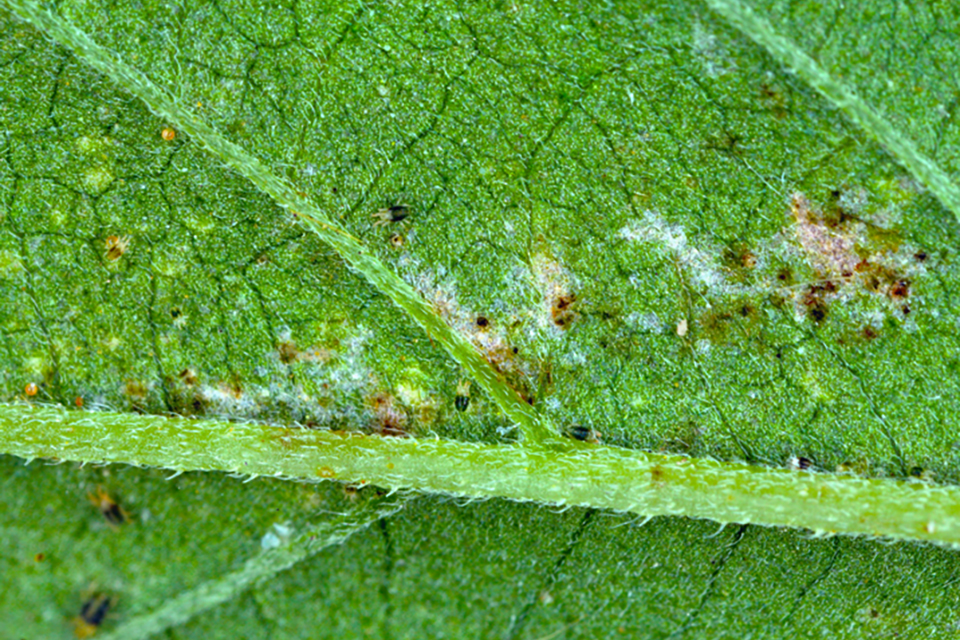
Spider mites are common pests that wreak havoc on cannabis plants if left unchecked. It is important to implement effective prevention and control strategies to protect your cannabis crop.
Kind Seed Co can help you keep these troublesome pests at bay and maintain a healthy and thriving cannabis garden by identifying the signs of a spider mite infestation and implementing organic and chemical control methods.
Identifying Spider Mite Infestations
Knowing how to identify the presence of spider mites is essential because, as with any pest attack, early detection is the key to effective control.
Symptoms and Signs of Spider Mite Presence on Cannabis Plants
Spider mites are tiny creatures, approximately the size of a speck of dust. They often go unnoticed until they do visible damage. Spider mites typically dwell on the underside of cannabis leaves, creating an intricate webbing that gives them protection and the perfect environment to breed.
The telltale signs of a spider mite infestation include tiny spots or stippling on the leaves due to mites sucking the plant, yellow or bronzing leaves, and a general decline in plant health. In severe infestations, you may notice a fine, silky web appearing on your plants’ leaves, branches, and even buds.
Importance of Early Detection for Effective Control
Spider mites can multiply rapidly and cause extensive damage to your cannabis plants if unnoticed or untreated. The earlier you identify and address these pests, the easier it will be to eliminate them and prevent further infestation.
Regular and thorough inspections of your cannabis plants are necessary. Pay special attention to the undersides of your plant leaves, and consider using a magnifying glass as part of your inspections to spot these minute invaders.
Preventive Measures for Spider Mite Infestations
Prevention should be your primary goal when it comes to managing spider mites. Adopting the right plant maintenance habits and leveraging nature’s own pest control solutions can make your cannabis garden less attractive to these tiny pests.
Proper Plant Maintenance and Hygiene Practices
Keeping your cannabis plants in good health is your first line of defense against spider mites. A strong, healthy plant is much less susceptible to pest infestations and can often handle small amounts of damage without any noticeable impact on its growth.
Key practices include regular watering and nutrient feeding, maintaining the ideal temperature and humidity levels, and avoiding overcrowding of plants to allow for proper air circulation. Regularly clean and sanitize your gardening tools to avoid cross-contamination, and consider implementing a quarantine period for any new plants before introducing them into your grow area.
Introduction of Beneficial Insects for Biological Control
Predator insects are highly effective at controlling spider mite populations. Releasing these beneficial organisms into your garden not only helps in reducing the existing spider mite population but also provides a long-term preventive solution by establishing a natural and self-sustaining control mechanism.
Organic Control Strategies for Spider Mites
If preventive measures aren’t enough, you’ll need to resort to treatment options to manage a spider mite infestation. Organic control strategies are effective and eco-friendly.
Neem Oil and Its Application for Spider Mite Control
One popular organic control method is the use of neem oil, a natural pesticide derived from the seeds of the neem tree. Neem oil is a broad-spectrum pesticide that works by disrupting the insect’s hormonal systems, starving them, and suffocating them.
To use neem oil for spider mite control, simply mix the oil with water and a mild soap or dish detergent to help the oil stick to the plant leaves. Spray the mixture onto your plants, making sure to get the underside of the leaves where spider mites tend to hide. Repeat this process every couple of days until the infestation is under control.
Essential Oils and Their Potential Repellent Effects on Spider Mites
Certain essential oils have also shown potential as an effective organic control measure for spider mites. Oils such as rosemary, peppermint, and eucalyptus not only disrupt the life cycle of spider mites but also act as repellents, discouraging future infestations. Apply essential oils similarly to neem oil.
Chemical Control Strategies for Spider Mites
Several chemical pesticides can control spider mites on cannabis plants. These include abamectin (a natural pesticide derived from soil bacteria), bifenthrin, and horticultural oils such as petroleum oil and mineral oil.
These products work by disrupting the nervous system of the mites, causing paralysis and death. They often come in various forms like dust, sprays, or concentrates. You can apply them topically to the plants or introduce them into the irrigation system.
Integrated Pest Management (IPM) Approach
An Integrated Pest Management (IPM) approach is the most effective and sustainable way to prevent and control spider mites in cannabis plants. This approach emphasizes the use of a combination of techniques – cultural, biological, and chemical – to achieve long-term pest management.
IPM is not only about responding to current infestations but also about preventing future ones. By maintaining healthy plants, introducing beneficial insects, and using organic or chemical controls only when necessary, you can establish a system of checks and balances that keeps spider mite populations under control.
Proactive Pest Management Practices in Cannabis Cultivation
Prevention is always better than cure when it comes to pest management. Regular monitoring of your cannabis plants for early signs of infestation, coupled with proactive preventive measures, can save you a great deal of time, effort, and resources in the long run.
Spider mites are formidable adversaries in cannabis cultivation. However, with effective strategies for prevention and control, you can safeguard your cannabis plants against these pests, ensuring their health and productivity.



